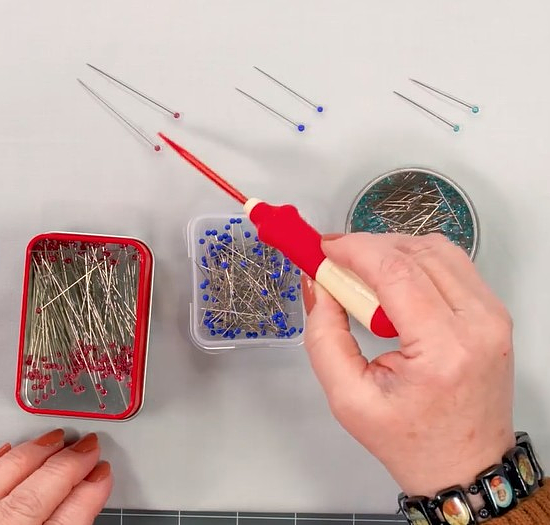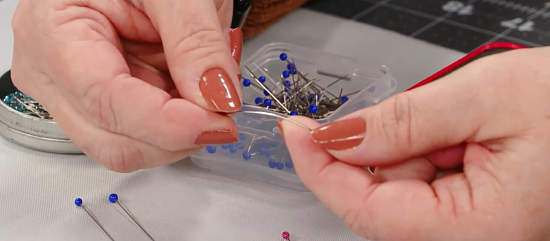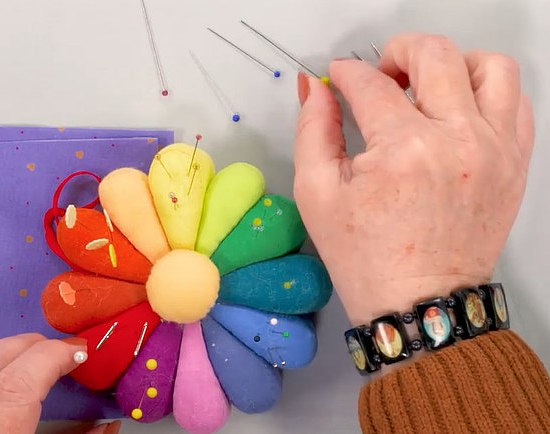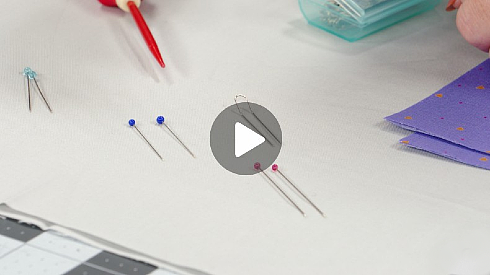Quilt-Making Goes More Smoothly with the Right Pins
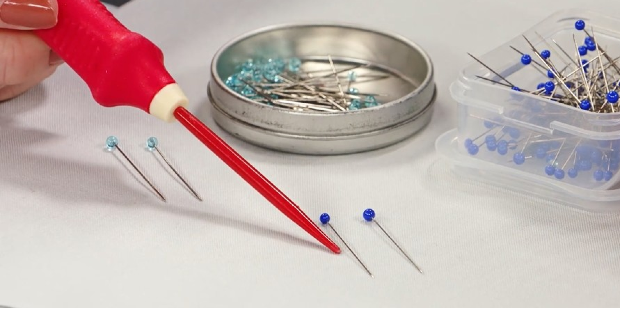
Standard Sewing Pins Aren’t Always the Best Choice!
Pins are essential tools for sewing, whether you’re making clothing, craft projects, or quilts. Quilters often start out with standard metal sewing pins but there are far better choices for quilt-making.
For example, glass-head pins won’t melt when touched by the iron but are fairly easy to grab. Longer, finer pins are better for easily pinning through layers (without leaving holes) while short pins are less likely to snag thread when hand-appliquing.
Colleen Tauke from National Quilters Circle has done an excellent job of reviewing different types of pins while pointing out features that work best for various aspects of quilting (and those that don’t work so great).
She covers pin thickness and how this can affect the glide of the pinning process, and whether this can cause an unwanted shift in fabrics. The ease of unpinning while piecing is another important factor.
She also discusses pin length, the material used for the heads, and how easy they are to grab, among other things.
Click to watch the video below for this great information (the video opens in a new window).
The pins mentioned in the video can be found at the links below. Clover, Dritz, and Wrights are all good brands.
- Fine, Extra Fine, and Ultra Fine Glass Head Pins
- Extra Long Glass Head Pins
- Flower Head Pins
- Fine Magic Pins for Quilting
- All Magic Pins
- Fork Pins
- Applique Pins
- T pins
- Corsage Pins






